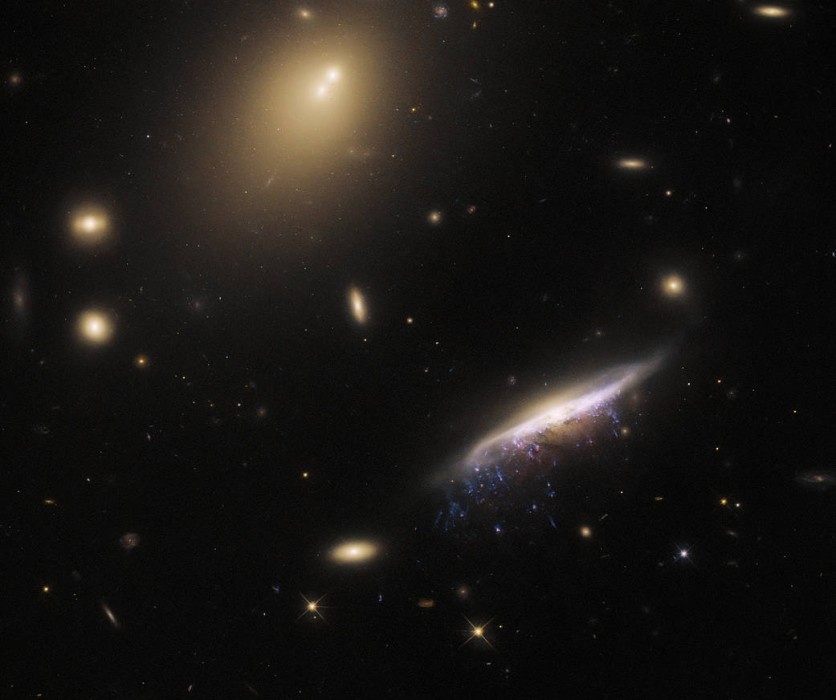A stunning new image from the NASA/ESA Hubble Space Telescope has captured the galaxy JW100 in all its glory!
The galaxy, which is located over 800 million light-years away in the constellation Pegasus, has been dubbed a "jellyfish" galaxy due to its streams of star-forming gas that drip from the disk of the galaxy like fresh paint.

Ram Pressure Stripping
This phenomenon is caused by a process called ram pressure stripping, which occurs when galaxies pass through the diffuse gas that pervades galaxy clusters, according to NASA.
As galaxies travel through this gas, it creates a headwind that strips gas and dust from the galaxy and produces the trailing streamers that are so prominent in JW100. The bright elliptical patches in the image are other galaxies in the cluster that houses JW100.
At the top of the image are two bright blotches encircled by a stunningly bright region of diffuse light. The galaxy cluster's brightest galaxy, IC 5338, contains this core.
NASA notes that IC 5338 is an elliptical galaxy with an extended halo, a type of galaxy called a cD galaxy.
It is typical for large galaxies to have numerous nuclei because they are known to grow by ingesting smaller galaxies, whose cores can take a very long time to be digested.
Bright Spots of Light
A large number of globular star clusters make up the bright spots of light that are scattered throughout the galaxy's furthest reaches. The purpose of this Hubble observation is to learn more about star creation in the tendrils of jellyfish galaxies.
These tendrils show star formation under extreme circumstances, which could aid astronomers in understanding star formation in other parts of the cosmos.
The image was captured using Hubble's Wide Field Camera 3, which allowed astronomers to capture a wider view of the galaxy and its surroundings.
With its incredible capabilities, the Hubble Space Telescope continues to provide astronomers with a wealth of information about our universe and the processes that shape it.
This latest image of JW100 is not only stunning but provides invaluable information about the phenomenon of ram pressure stripping and the formation of star clusters in extreme conditions.
With continued research and exploration, astronomers hope to gain a better understanding of the universe we live in and the many wonders it holds such as this jellyfish galaxy.
Related Article : NASA's Hubble Space Telescope Detects Isolated Black Hole For The First Time; What Makes This Black Hole Different From Others?

ⓒ 2025 TECHTIMES.com All rights reserved. Do not reproduce without permission.




